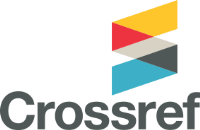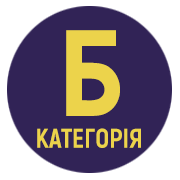METHODOLOGICAL FOUNDATIONS OF THE PEDAGOGICAL DESIGN OF CSDN AND THE COMSRL OF ARTIFICIAL INTELLIGENCE TECHNOLOGY IN TEACHING MATHEMATICS: TRANSFORMING OF THE LEARNING PROCESS THROUGH INNOVATIVE TECHNOLOGIES
DOI:
https://doi.org/10.32782/ped-uzhnu/2025-9-15Keywords:
research-based learning, artificial intelligence, machine learning, neural networks, didactics of mathematics, іnnovative strategies, variational models, COMSRL, АІAbstract
The study proposes a methodological framework for the pedagogical design of COMSRL, incorporating the strategic use of AI technologies in research-based mathematics teaching. The framework aims to transform the learning process by applying technology in innovative ways that are driven by educators’ motivations. The study analyses the feasibility of using AI methods and algorithms to solve research problems. It suggests components of a methodological system for teaching COMSRL mathematics subjects and discusses effective methods and strategies for using AI to solve research problems. The advantages and disadvantages of using AI in exploratory mathematics teaching are considered, and the author proposes a functional-structural model of learning activity that has been tested in exploratory mathematics teaching using COMSRL AI. Machine learning uses algorithms and models to teach computers to solve complex research problems, such as classification, prediction, and optimisation. It is considered one of the most effective approaches in artificial intelligence. This approach enables computer systems to ’learn’ independently from large volumes of data, facilitating continuous improvement and development. It reveals necessary patterns and regularities in the data, thereby broadening and deepening the scope of fundamental mathematical education. It also intensifies the learning process, improving its effectiveness and students’ intellectual development. The author’s tried-and-tested teaching model is examined in the context of the operational components of the teaching process during the initial stage of acquiring exploratory mathematics skills. The COMSLR research approach influences all components of the methodological system for teaching mathematics, including its objectives, content, approaches, methods and resources. Integrating COMSRL AI into the learning process creates conditions that facilitate the integration of academic disciplines, intensify learning, and enable personalisation. Therefore, studying algebra, analysis and geometry in a visual and intuitive way using COMSRL AI helps students to understand key mathematical concepts and develop their creativity.
References
Гриб’юк О. О. Використання технологій штучного інтелекту вчителями математики в процесі дослідницького навчання для мотивації навчально-пізнавальної діяльності учнів: виклики, загрози та перспективи. Педагогічна інноватика: сучасність та перспективи. Одеса : Видавничий дім «Гельветика», 2024. Вип. 4. С. 116–126. DOI: https://doi.org/10.32782/ped-uzhnu/2024-4-18
Гриб’юк О. О. Дослідницьке навчання учнів предметів природничо-математичного циклу з використанням комп’ютерно орієнтованих методичних систем / О. О. Гриб’юк. Монографія. Київ: НПУ імені М. П. Драгоманова, 2019. 858 с.
Гриб’юк О. О. Педагогічне проектування варіативних моделей комп’ютерно орієнтованих методичних систем дослідницького навчання предметів природничо-математичного циклу з використанням технологій штучного інтелекту. Педагогіка формування творчої особистості у вищій і загальноосвітній школах : зб. наук. пр. / [редкол.: А. В. Сущенко (голов. ред.) та ін.]. Одеса : Видавничий дім «Гельветика», 2024. Вип. 92. С. 93–102. DOI: https://doi.org/10.32782/1992-5786.2024.92.15
Гриб’юк О. О. Форми і методи використання технологій штучного інтелекту для професійного розвитку педагогічних кадрів: дидактичні та психофізіологічні аспекти дослідницького навчання. Габітус : науковий журнал. Одеса : Видавничий дім «Гельветика», 2024. Вип. 60. С. 55–68. DOI: https://doi.org/10.32782/2663-5208.2024.60.9
Ben-David S., Hrubeš P., Moran S., Shpilka A., Yehudayoff A. Nature Machine Intelligence, 2019. Vol. 1. P. 44–48. DOI: https://doi.org/10.1038/d41586-019-00083-3 (date of access: 12.04.2025).
Castelvecchi D. Machine learning leads mathematicians to unsolvable problem. Nature, 2019. Vol. 565 (7739). P. 277. DOI: https://doi.org/10.1038/d41586-019-00083-3 (date of access: 25.03.2025).
ChatGPT Shared Links FAQ. Help Open A. I. URL: https://help.openai.com/en/articles/7925741-chatgptshared-links-faq/ (дата звернення: 17.03.2025).
Hrybiuk, O. CleverCOMSRL Intelligent Expert System Knowledge Representation Model Features and Inconsistency Resolution Capabilities. In: Machado, J., Trojanowska, J., Soares, F., Rea, P., Butdee, S., Gramescu, B. (eds) Innovations in Mechatronics Engineering I. V. icieng 2025. Lecture Notes in Mechanical Engineering. Springer, Cham, 2025. P. 57–68. DOI: https://doi.org/10.1007/978-3-031-94223-5_6 (date of access: 27.04.2025).
Hrybiuk O., Kant G. S. CleverCOMSRL: Implementation of an AI Computer-Aided Design System in the Context of the Cognitive Science Paradigm for the Research Training Process. Lecture Notes in Mechanical Engineering. Cham, 2024. P. 351–362. DOI: https://doi.org/10.1007/978-3-031-61575-7_32 (date of access: 17.05.2025).
Hrybiuk O. Improvement of the Educational Process by the Creation of Centers for Intellectual Development and Scientific and Technical Creativity. Lecture Notes in Mechanical Engineering. Cham, 2019. P. 370–382. DOI: https://doi.org/10.1007/978-3-030-18789-7_31 (date of access: 27.05.2025).
Software for Exascale Computing – SPPEXA 2016-2019 / ed. by H.-J. Bungartz et al. Cham: Springer International Publishing, 2020. URL: https://doi.org/10.1007/978-3-030-47956-5 (date of access: 17.04.2025).








